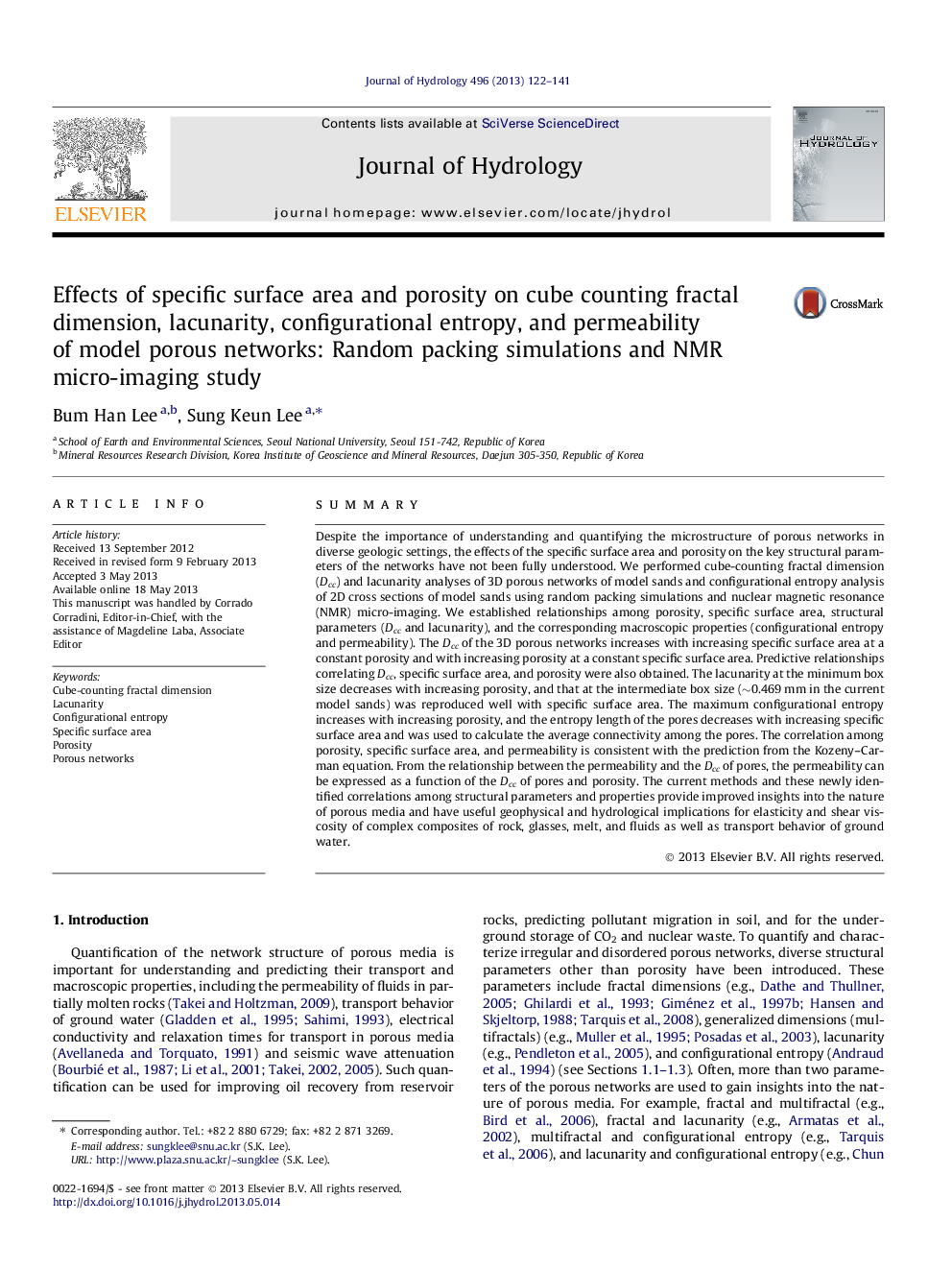| Article ID | Journal | Published Year | Pages | File Type |
|---|---|---|---|---|
| 6413728 | Journal of Hydrology | 2013 | 20 Pages |
â¢Dcc of the 3D porous networks increases with increasing specific surface area.â¢Lacunarity at intermediate box size is reproduced well with specific surface area.â¢Maximum configurational entropy increases with increasing porosity.â¢Entropy length of the pores decreases with increasing specific surface area.â¢Permeability is expressed as a function of the Dcc of pores and porosity.
SummaryDespite the importance of understanding and quantifying the microstructure of porous networks in diverse geologic settings, the effects of the specific surface area and porosity on the key structural parameters of the networks have not been fully understood. We performed cube-counting fractal dimension (Dcc) and lacunarity analyses of 3D porous networks of model sands and configurational entropy analysis of 2D cross sections of model sands using random packing simulations and nuclear magnetic resonance (NMR) micro-imaging. We established relationships among porosity, specific surface area, structural parameters (Dcc and lacunarity), and the corresponding macroscopic properties (configurational entropy and permeability). The Dcc of the 3D porous networks increases with increasing specific surface area at a constant porosity and with increasing porosity at a constant specific surface area. Predictive relationships correlating Dcc, specific surface area, and porosity were also obtained. The lacunarity at the minimum box size decreases with increasing porosity, and that at the intermediate box size (â¼0.469Â mm in the current model sands) was reproduced well with specific surface area. The maximum configurational entropy increases with increasing porosity, and the entropy length of the pores decreases with increasing specific surface area and was used to calculate the average connectivity among the pores. The correlation among porosity, specific surface area, and permeability is consistent with the prediction from the Kozeny-Carman equation. From the relationship between the permeability and the Dcc of pores, the permeability can be expressed as a function of the Dcc of pores and porosity. The current methods and these newly identified correlations among structural parameters and properties provide improved insights into the nature of porous media and have useful geophysical and hydrological implications for elasticity and shear viscosity of complex composites of rock, glasses, melt, and fluids as well as transport behavior of ground water.
